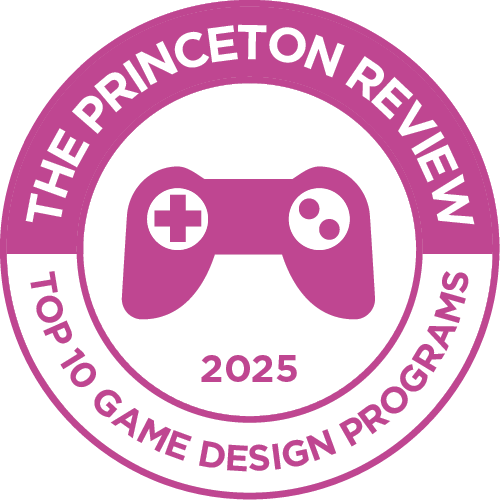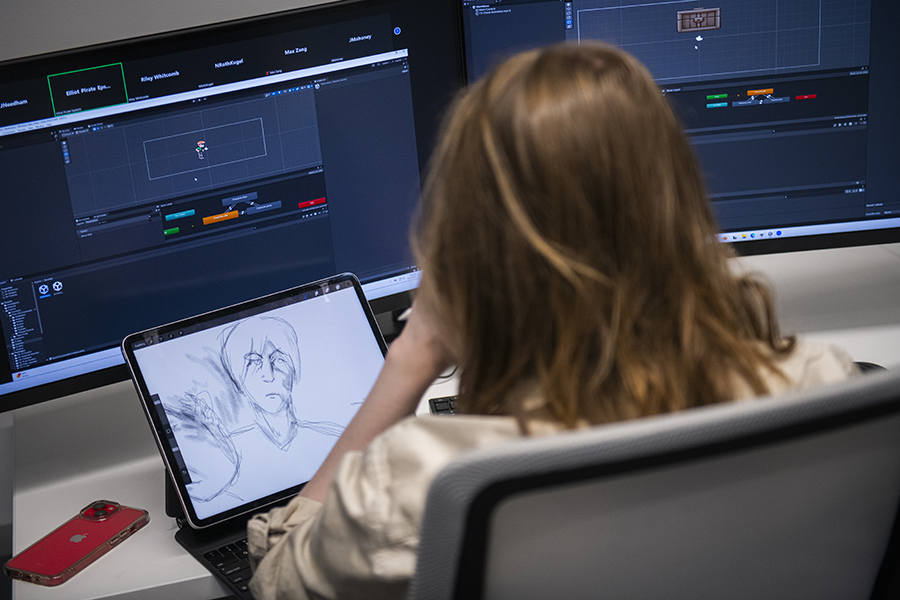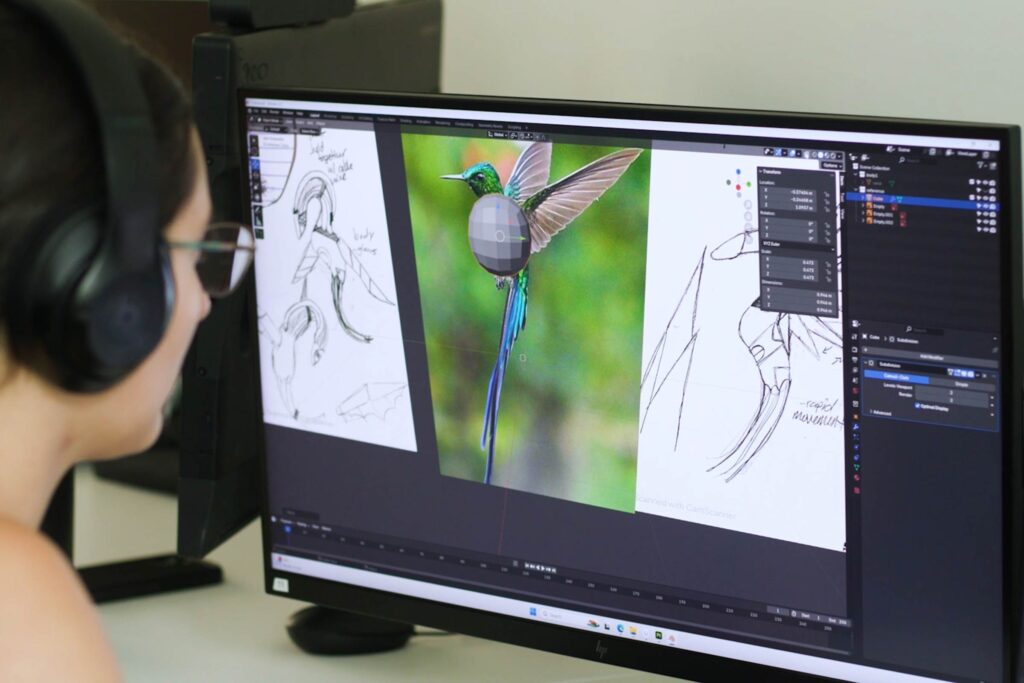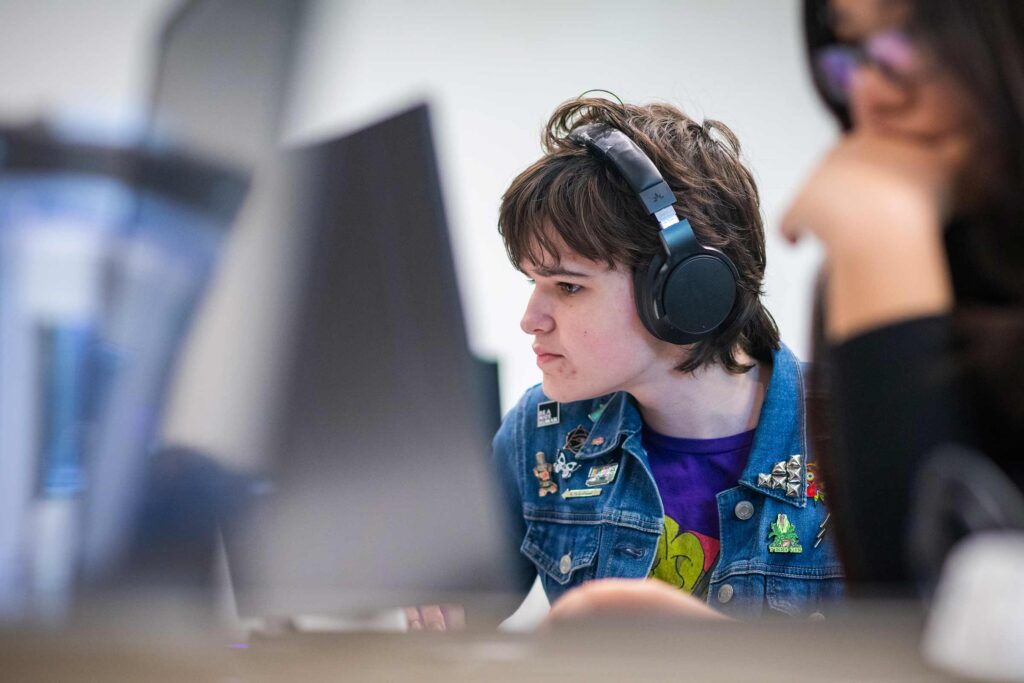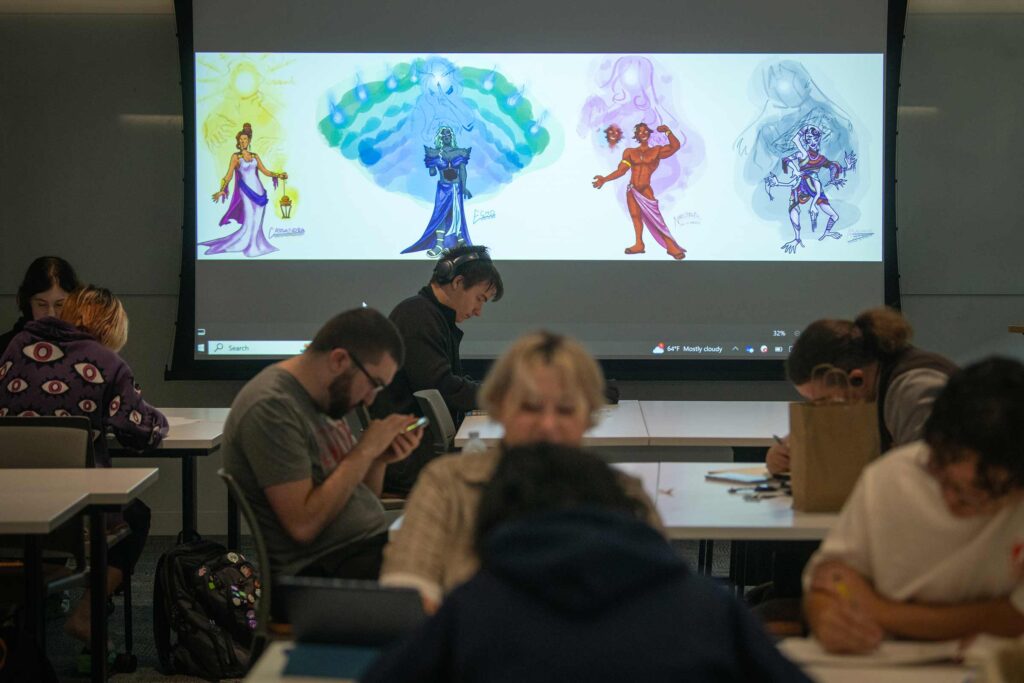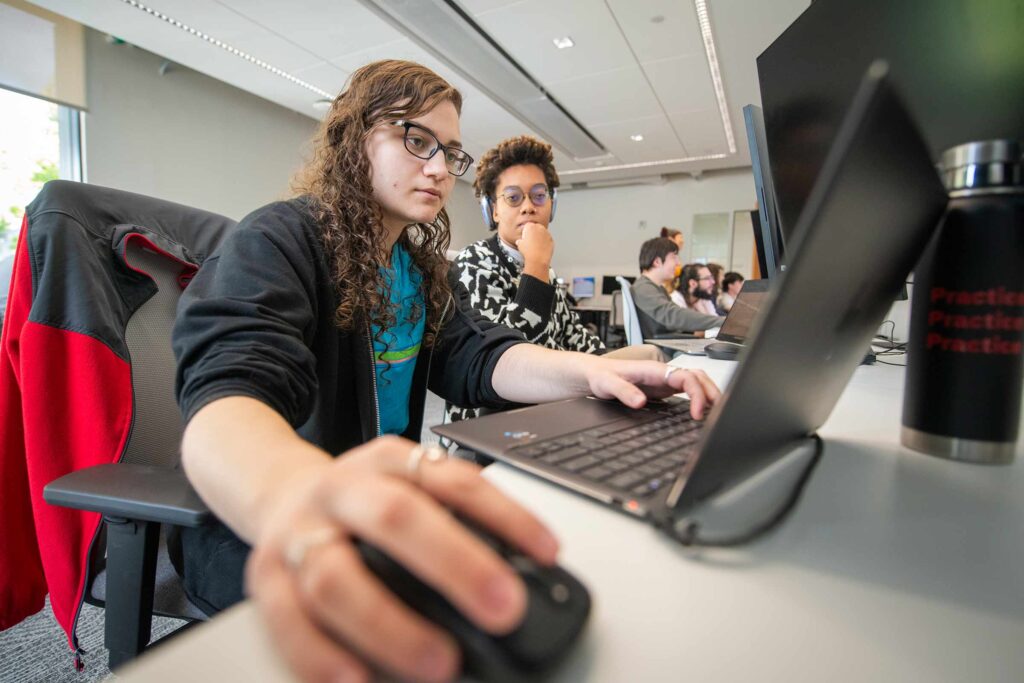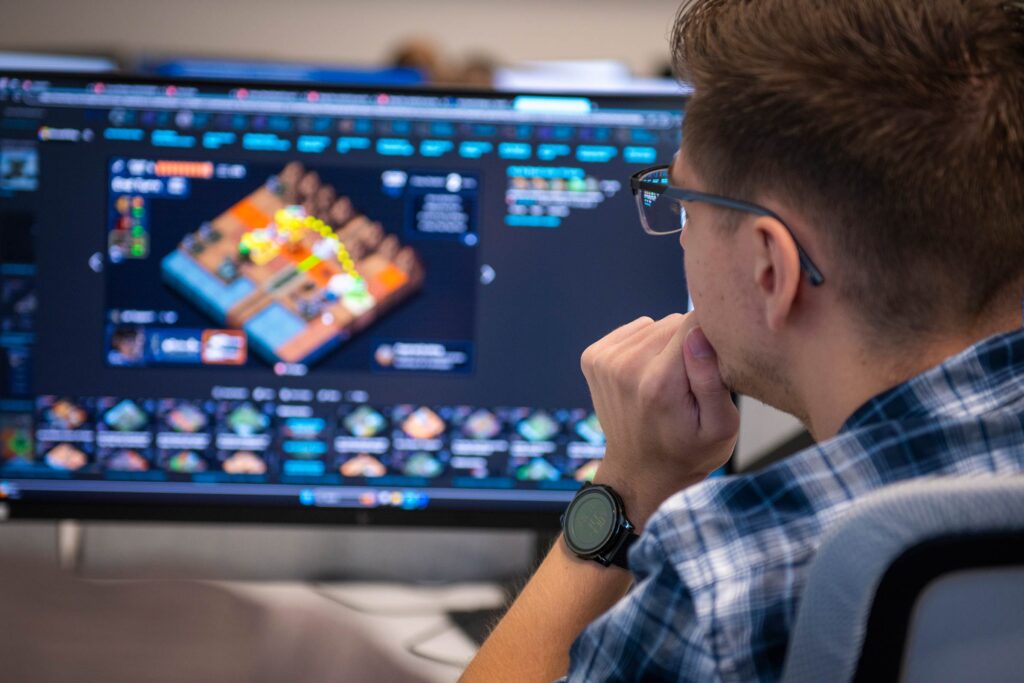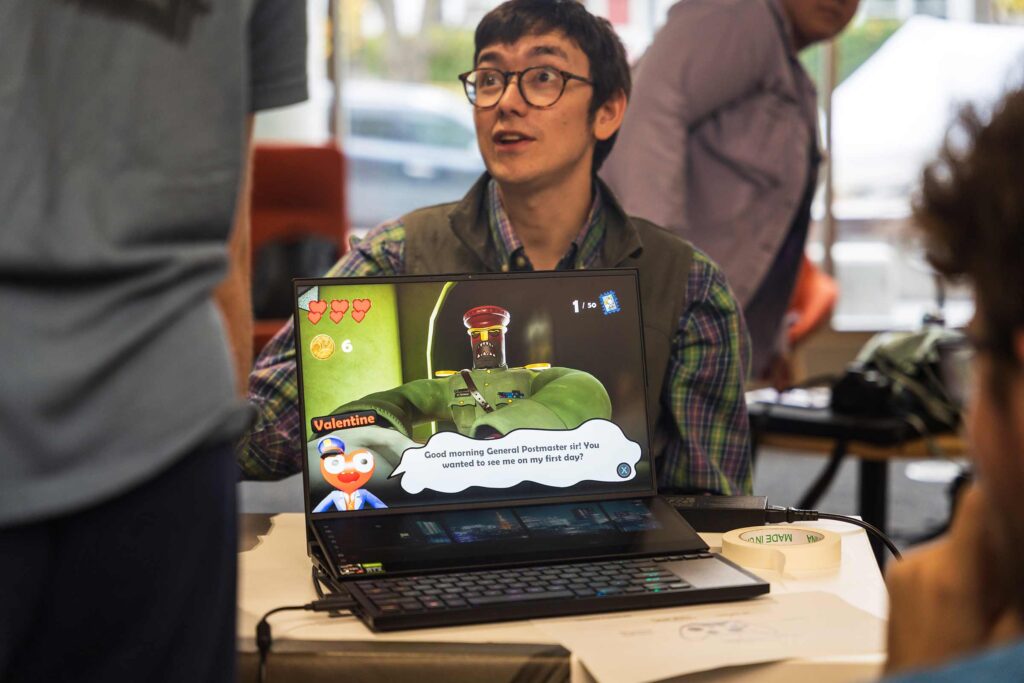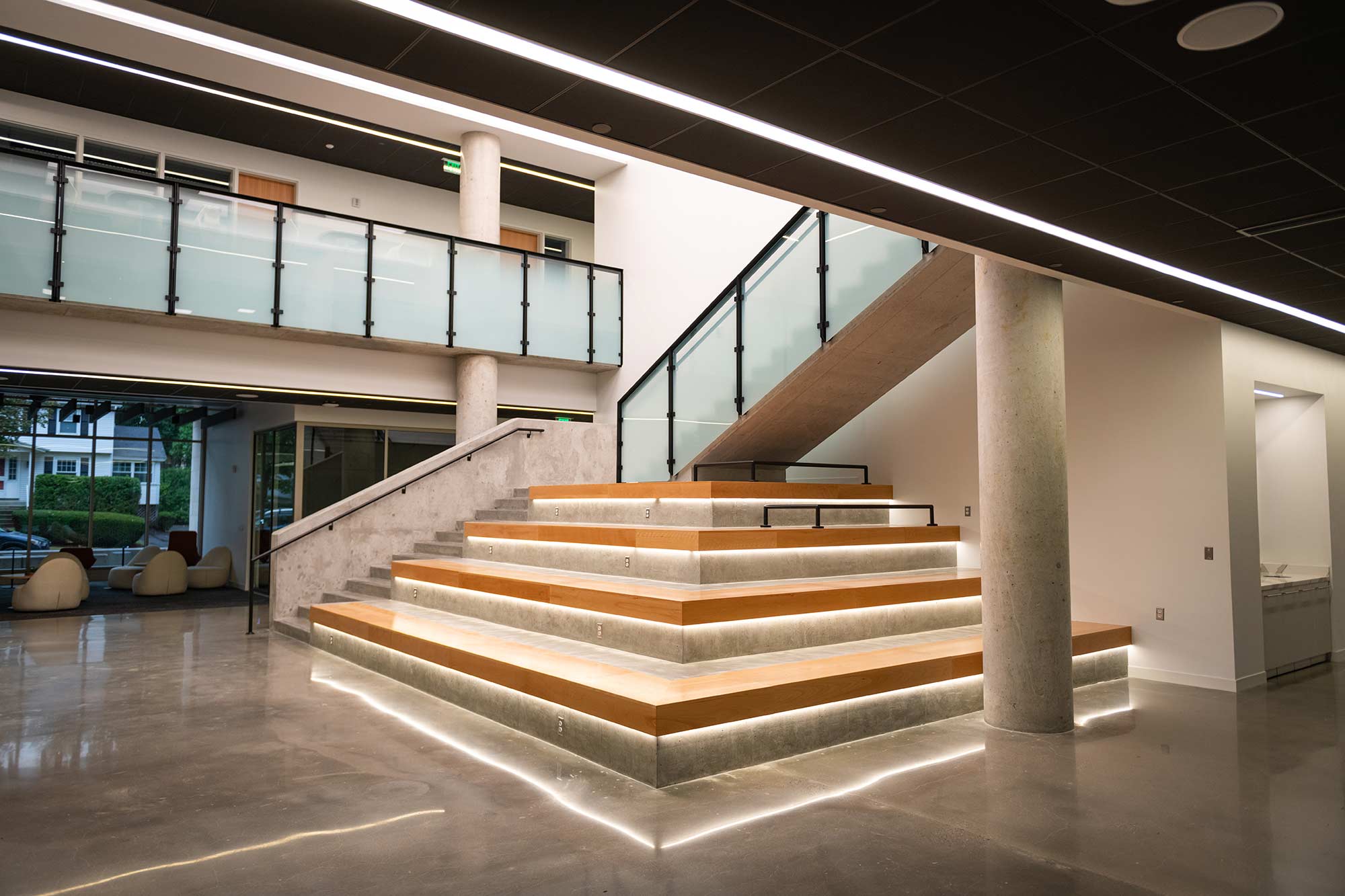Interactive Media: Game Design and Development, B.A.
Overview
The Bachelor of Arts in Interactive Media: Game Design and Development will allow you to pursue your passion for games while preparing you for a career in the $160 billion interactive media and gaming industry.
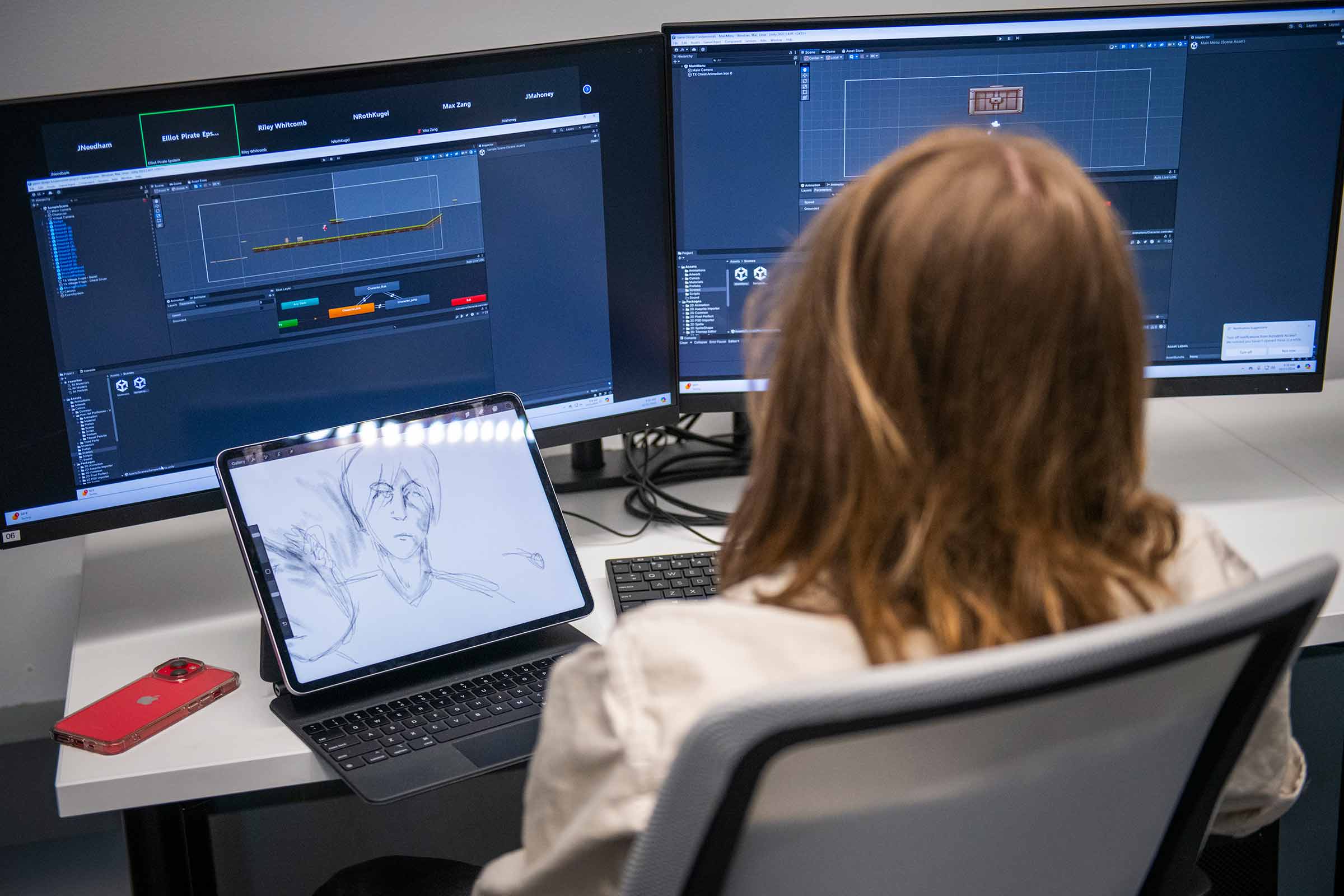
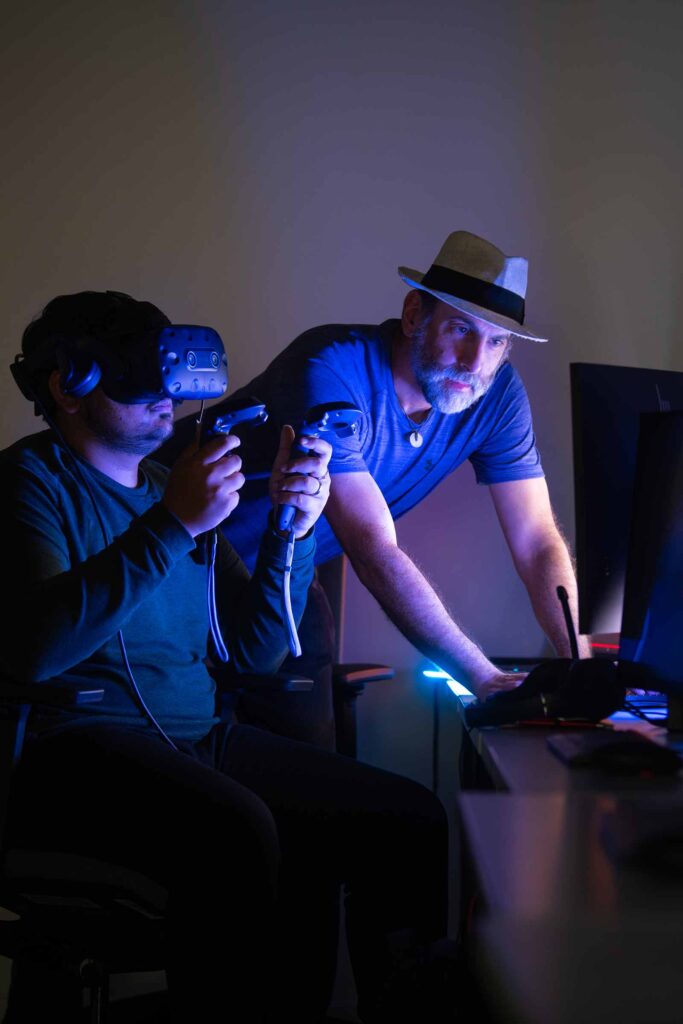
Why study interactive media: game design and development at Clark?
- Our game design program is currently ranked as the No. 3 school for game design in the world by The Princeton Review.
- The rich curriculum and the strengths of a Clark education, which is interwoven around humanism and social justice, provide fertile ground for you and your peers to build games that make the world a better place.
- You will benefit from studio experiences and industry/education partnerships that drive entrepreneurship, academic collaboration, and economic improvement across the digital and video game industries.
- As part of our accelerated Master’s program, you may choose to continue your studies for a fifth year, obtaining an MFA in addition to your B.A.
- Our team of stellar faculty and successful graduates are connected to industry leaders and employers, creating pipelines for landing internships and careers.
- You will gain access to state-of-the art labs and industry-standard software.
Choose from the following specialized tracks:
Frequently Asked Questions
What can I do with a major in interactive media: game design and development?
The video game industry represents over $160 billion in worldwide sales, and is expected to grow, surpassing previous projections. This rapid growth has created a high demand for interactive media experts working on websites, games, cell phone applications, and more. Modern video games have transitioned beyond entertainment into a wide array of other intersecting industries and organizations, including health care, education, nonprofits, and government.
What skills will I learn as a game design student?
As a game design student, you’ll master a broad range of skills essential for creating immersive and engaging interactive experiences. You’ll learn to design and animate 3D characters, environments, and props; code and optimize game mechanics using industry-standard programming languages; and develop innovative levels with balanced gameplay and compelling narratives. In addition, you’ll create user interfaces that are both functional and visually striking while ensuring a seamless player experience. Finally, you’ll gain expertise in production management, honing your ability to lead teams, communicate goals, and use analytics to drive decision-making.
What laptop specifications or minimum system requirements are recommended for students in the program?
The answer to this question depends on what kind of work you plan on doing in game development – UI/UX, coding and engine work, 2D art, 3D art and animation, writing, audio/video production, etc.
Before we present you with the specs, here are a few overall tips:
- The hardware for 3D art and animation is probably the area of development which puts the most strain on computer specs.
- A computer designed to play games sometimes isn’t the best choice for a development platform.
- Spend more on GPUs than on CPUs (i.e. get the best graphics card you can afford.)
- Spend more on RAM than on CPU speed.
- Don’t worry too much about hard drive space you can add that later.
- We’ve got lots of computers in almost a dozen labs on campus you can access whenever you need.
- We’ve got big monitors on our PCs, so you can get by with a smaller, lighter laptop with a smaller screen that is more portable, more robust, has longer battery life, is less expensive and fits in your backpack.
- Get a good backpack for protection.
- A protection plan is not a bad idea easier, since you usually can get a free battery once per year.
- You can get either a laptop or a desktop, but most students prefer a laptop.
- You can get a MAC or a PC, but most students and most game dev pros (who aren’t strictly artists) go for a pc.
- Whatever you get you will probably will want a newer/better model after you have been here a few years, so probably a good idea to go with the minimum system for now, until you know more about what you want to do.
- Below is a minimum spec and a high-end spec – either will be fine.
Minimum Laptop Specifications – Game Design (Fall 2025)
Core Components
- CPU: Intel Core i7 (12th gen or newer) or AMD Ryzen 7 (6000 series or newer)
- RAM: 16 GB DDR5 (upgradeable to 32 GB recommended)
- GPU: NVIDIA GeForce RTX 3060 (Laptop GPU) or AMD Radeon RX 6700M equivalent
- Storage: 512 GB NVMe SSD (1 TB preferred for large asset files)
Display & Graphics
- Screen: 15.6” Full HD (1920×1080), IPS panel
- Color Accuracy: 72% NTSC or ~100% sRGB (important for art/design work)
Audio & Creative Work
- Audio Support: Standard audio chipset (ensure DAW software like Audacity or FL Studio runs smoothly)
- Ports: Minimum of 1 USB-C, 2 USB-A, HDMI, and headphone/mic jack
Software & Compatibility
- OS: Windows 11 Home or Pro (fully compatible with Unity, Unreal, and Adobe tools)
- VR Capability: Optional, but GPU should support basic VR development
Other Essentials
- Battery Life: At least 5–6 hours of general use
- Keyboard: Backlit full-size keyboard (for comfort during long coding/design sessions)
- Cooling: Dual-fan or high-efficiency cooling system (important for GPU/CPU stability)
High End Laptop Specifications – Game Design (Fall 2025)
Core Hardware
- CPU: Intel Core i7 (13th gen or newer) or AMD Ryzen 9 (7000 series or newer)
- RAM: 32 GB DDR5 (minimum 16 GB, but 32 GB strongly recommended)
- GPU: NVIDIA GeForce RTX 4070/4080 (Laptop GPU) or AMD Radeon RX 7700M or better
- Storage: 1 TB NVMe SSD (preferably PCIe Gen 4) – fast read/write for large game assets
- Display: 15” or 17” IPS display, 2560×1440 or higher, 100% sRGB color coverage for accurate art and texture work
Audio & Multimedia
- Sound Card: High-definition audio support with ASIO compatibility (for DAW work)
- Ports: USB-C, USB-A, HDMI, DisplayPort, audio jack, and ideally Thunderbolt 4 for external interfaces
- Webcam & Mic: Integrated HD webcam and quality microphone (for remote team collaboration)
Creative Software Compatibility
- OS: Windows 11 Home or Pro (most compatible with game dev tools and drivers)
- VR-Ready: Capable of supporting VR headset development (e.g., Oculus Rift, HTC Vive)
Build & Expandability
- Build Quality: Durable chassis with effective thermal management (metal or magnesium alloy preferred)
- Keyboard: Full-size backlit keyboard with good key travel (helpful for scripting and coding)
- Upgradeability: User-accessible slots for RAM and storage upgrades
Other Considerations
- Battery Life: At least 6–8 hours on general use (gaming and 3D work will lower this)
- Weight: Ideally under 6 lbs if the student needs portability
Warranty and Support: Consider extended warranty and accidental damage protection


